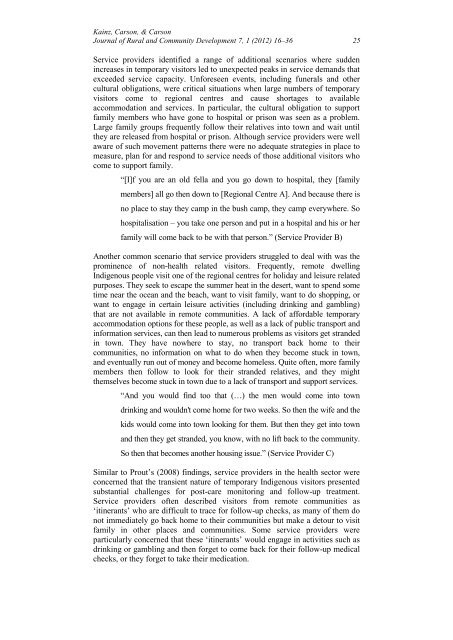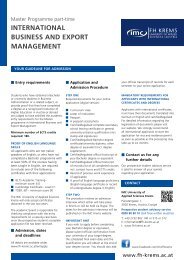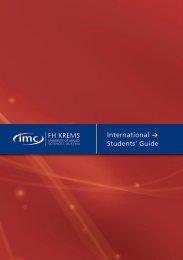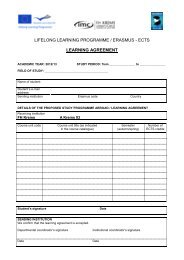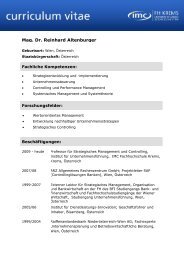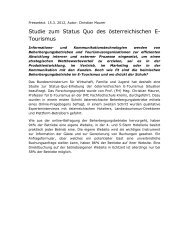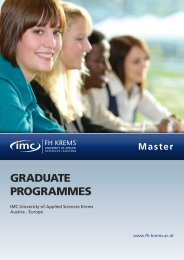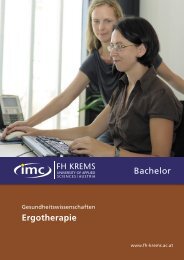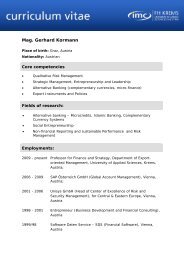Temporary Indigenous Mobility in Remote South Australia ...
Temporary Indigenous Mobility in Remote South Australia ...
Temporary Indigenous Mobility in Remote South Australia ...
You also want an ePaper? Increase the reach of your titles
YUMPU automatically turns print PDFs into web optimized ePapers that Google loves.
Ka<strong>in</strong>z, Carson, & Carson<br />
Journal of Rural and Community Development 7, 1 (2012) 16–36 25<br />
Service providers identified a range of additional scenarios where sudden<br />
<strong>in</strong>creases <strong>in</strong> temporary visitors led to unexpected peaks <strong>in</strong> service demands that<br />
exceeded service capacity. Unforeseen events, <strong>in</strong>clud<strong>in</strong>g funerals and other<br />
cultural obligations, were critical situations when large numbers of temporary<br />
visitors come to regional centres and cause shortages to available<br />
accommodation and services. In particular, the cultural obligation to support<br />
family members who have gone to hospital or prison was seen as a problem.<br />
Large family groups frequently follow their relatives <strong>in</strong>to town and wait until<br />
they are released from hospital or prison. Although service providers were well<br />
aware of such movement patterns there were no adequate strategies <strong>in</strong> place to<br />
measure, plan for and respond to service needs of those additional visitors who<br />
come to support family.<br />
“[I]f you are an old fella and you go down to hospital, they [family<br />
members] all go then down to [Regional Centre A]. And because there is<br />
no place to stay they camp <strong>in</strong> the bush camp, they camp everywhere. So<br />
hospitalisation – you take one person and put <strong>in</strong> a hospital and his or her<br />
family will come back to be with that person.” (Service Provider B)<br />
Another common scenario that service providers struggled to deal with was the<br />
prom<strong>in</strong>ence of non-health related visitors. Frequently, remote dwell<strong>in</strong>g<br />
<strong>Indigenous</strong> people visit one of the regional centres for holiday and leisure related<br />
purposes. They seek to escape the summer heat <strong>in</strong> the desert, want to spend some<br />
time near the ocean and the beach, want to visit family, want to do shopp<strong>in</strong>g, or<br />
want to engage <strong>in</strong> certa<strong>in</strong> leisure activities (<strong>in</strong>clud<strong>in</strong>g dr<strong>in</strong>k<strong>in</strong>g and gambl<strong>in</strong>g)<br />
that are not available <strong>in</strong> remote communities. A lack of affordable temporary<br />
accommodation options for these people, as well as a lack of public transport and<br />
<strong>in</strong>formation services, can then lead to numerous problems as visitors get stranded<br />
<strong>in</strong> town. They have nowhere to stay, no transport back home to their<br />
communities, no <strong>in</strong>formation on what to do when they become stuck <strong>in</strong> town,<br />
and eventually run out of money and become homeless. Quite often, more family<br />
members then follow to look for their stranded relatives, and they might<br />
themselves become stuck <strong>in</strong> town due to a lack of transport and support services.<br />
“And you would f<strong>in</strong>d too that (…) the men would come <strong>in</strong>to town<br />
dr<strong>in</strong>k<strong>in</strong>g and wouldn't come home for two weeks. So then the wife and the<br />
kids would come <strong>in</strong>to town look<strong>in</strong>g for them. But then they get <strong>in</strong>to town<br />
and then they get stranded, you know, with no lift back to the community.<br />
So then that becomes another hous<strong>in</strong>g issue.” (Service Provider C)<br />
Similar to Prout’s (2008) f<strong>in</strong>d<strong>in</strong>gs, service providers <strong>in</strong> the health sector were<br />
concerned that the transient nature of temporary <strong>Indigenous</strong> visitors presented<br />
substantial challenges for post-care monitor<strong>in</strong>g and follow-up treatment.<br />
Service providers often described visitors from remote communities as<br />
‘it<strong>in</strong>erants’ who are difficult to trace for follow-up checks, as many of them do<br />
not immediately go back home to their communities but make a detour to visit<br />
family <strong>in</strong> other places and communities. Some service providers were<br />
particularly concerned that these ‘it<strong>in</strong>erants’ would engage <strong>in</strong> activities such as<br />
dr<strong>in</strong>k<strong>in</strong>g or gambl<strong>in</strong>g and then forget to come back for their follow-up medical<br />
checks, or they forget to take their medication.


